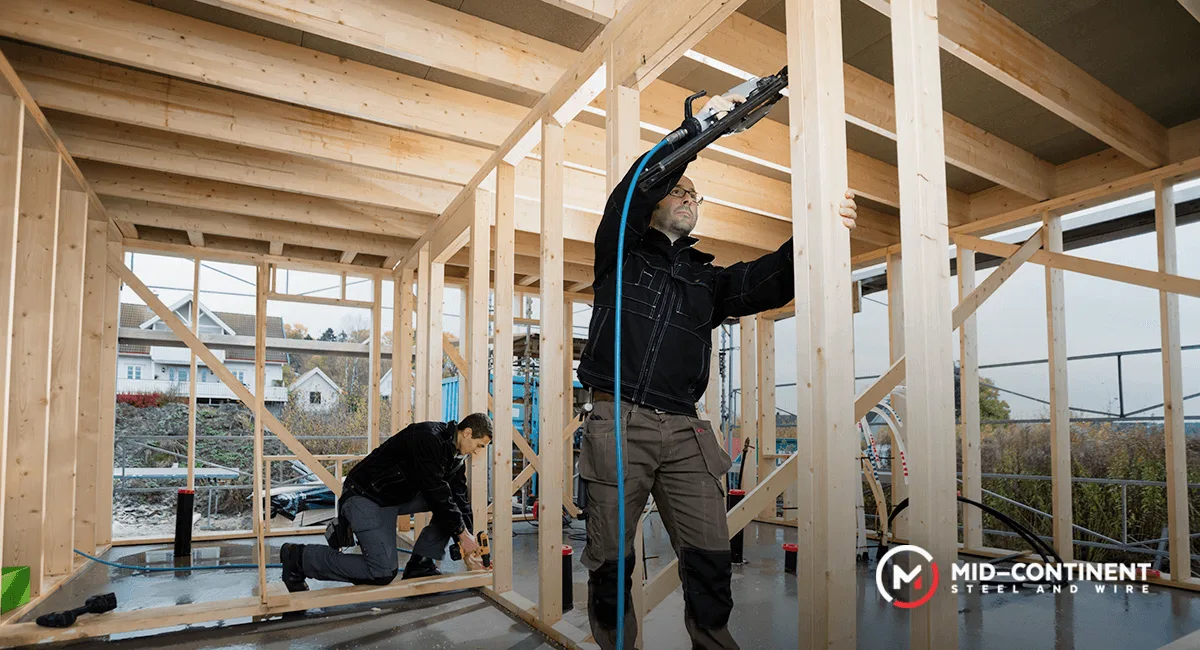
When framing walls, choosing the right wood and the right nails is essential. The size of nails for framing depends on the specific application and the type of lumber used. The most common sizes for framing nails are 16d, 10d, and 8d.
The first step is to consider the length and thickness required for your project. A nail that is too long could result in a piece of lumber that splits. Nails that are too short and thin might not be able to hold the structure together properly. Finding the right balance when selecting the perfect nail is fundamental.
To better understand what size nails for framing is best, keep reading ahead.
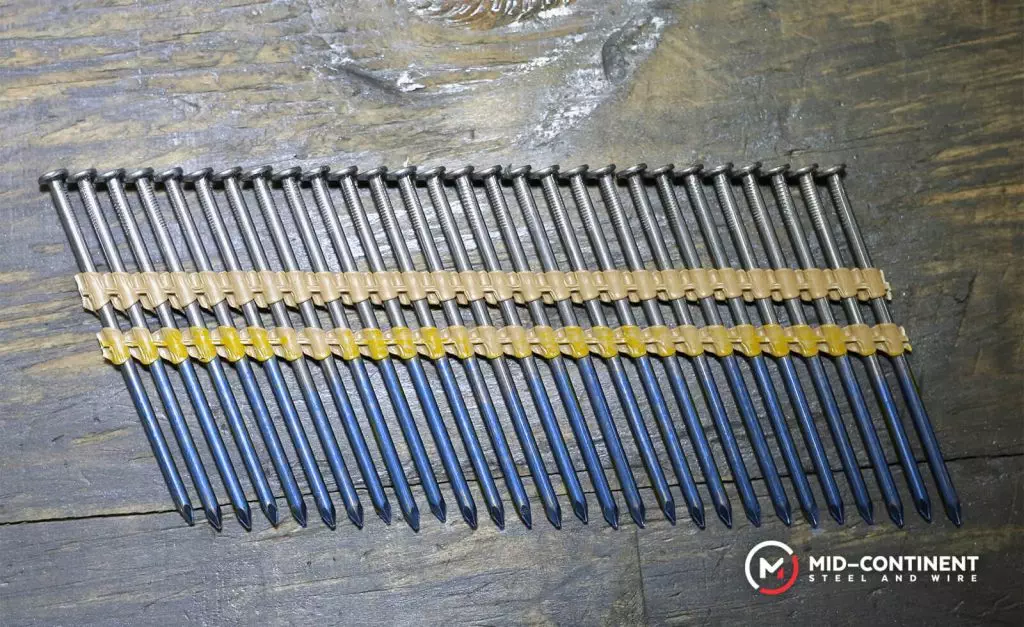
Nails for 2×4 framing
2×4 framing usually requires 16d nails, also referred to as 16-penny nails. The recommended length for this would be 3 ½ inches.
There are two varieties of the 16-penny nails:
- Common nails: Have a smooth head and a wider diameter of 0.162 inches.
- Sinker nails: Have a textured head and a thinner diameter of 0.148 inches.
When framing a 2×4, you will want to use the sinker nails. Their textured head prevents the hammer from slipping and they also typically have a vinyl or epoxy coating that allows you to drive them into the framing much more easily.
Nails for attachments
While the 16d nails are perfect for joining together 2x4s, you will need a different type of nail for the attachments, which can include: furring strips, subfloors, and sheathing. The length of a 16d nail is too long for this aspect of framing.
8d nails are shorter at 2 ½ inches. Just as 16d nails, they are found in a common nail and a sinker variety. The sinkers are also vinyl-coated and thinner than common nails, making them ideal for this type of application.
Nails for roof decking
The appropriate nail size for this framing project depends on the thickness of the decking material, commonly made of plywood or oriented strand board. The thickness of these materials can vary, but here are some general guidelines:
- 1/2-inch Plywood or OSB: Use 8d common nails or 8d ring-shank nails. These nails are typically around 2 1/2 inches long.
- 5/8-inch Plywood or OSB: Use 10d common nails or 10d ring-shank nails. These nails are typically around 3 inches long.
When attaching roof decking, it’s also important to consider the type of nail. Ring-shank nails are often preferred for this application because they provide better holding power and resistance to pull out compared to smooth-shank nails.
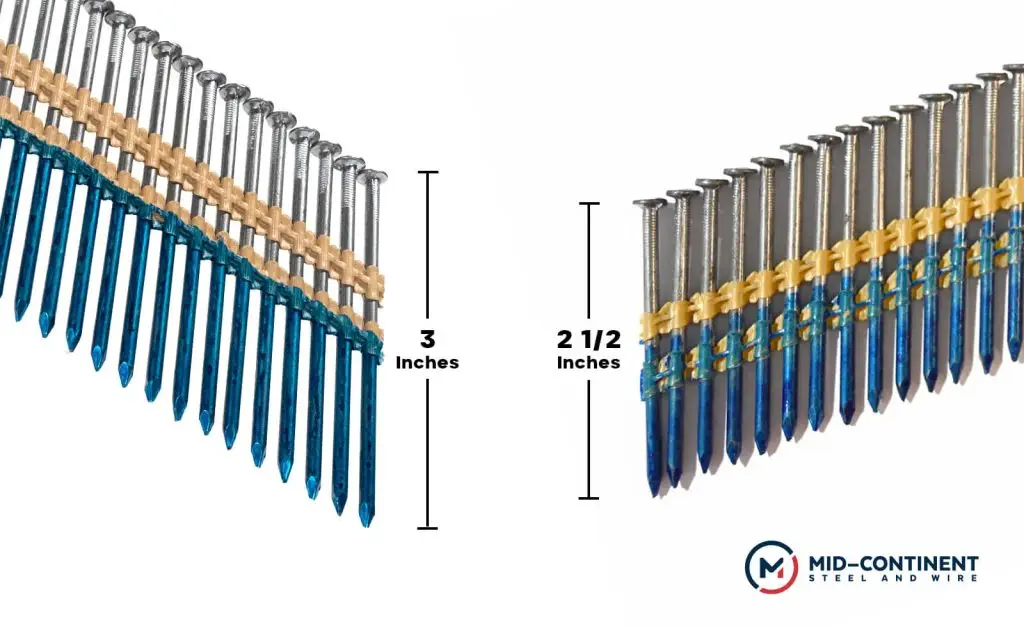
Galvanized nails for framing
In framing applications where the structure might be exposed to weather conditions such as rain, snow, or humidity, galvanized nails help prevent rust and corrosion, which could weaken the connections over time.
When choosing galvanized nails for framing, you can look for two main types of galvanized coatings:
- Hot-Dip Galvanized Nails (HDG): These nails are dipped in molten zinc, providing a thick, durable coating. HDG are suitable for exterior applications and provide excellent corrosion resistance.
- Electro-Galvanized Nails (EG): These nails are coated with zinc through an electroplating process. While EG nails also offer corrosion resistance, the coating is generally thinner than hot-dip galvanizing. They are suitable for interior applications or areas with less exposure to harsh weather conditions.
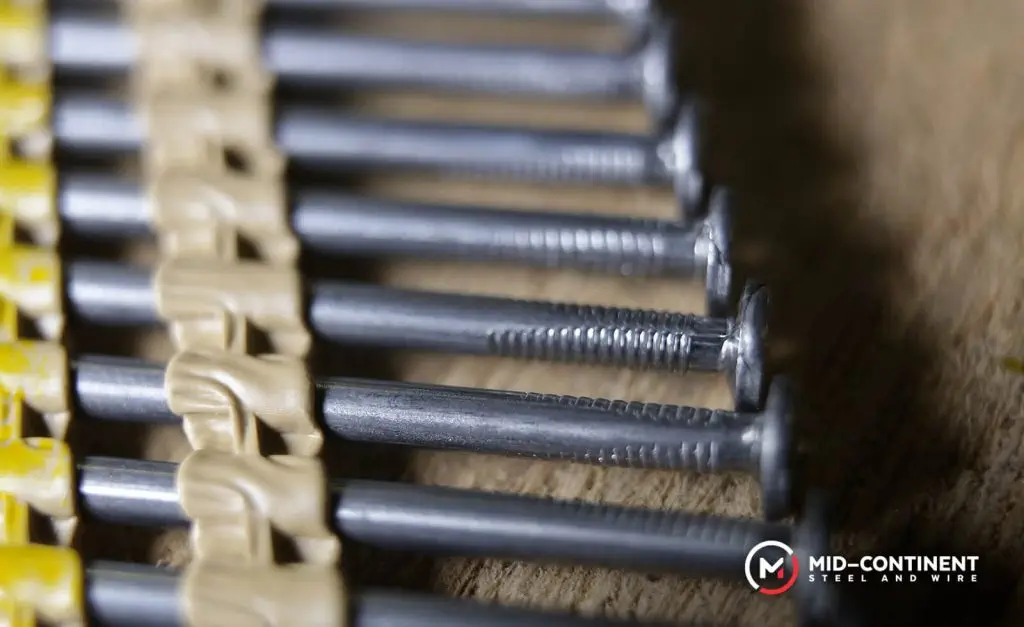
Using a nail gun for framing
Nail guns are commonly used in framing to speed up the process. There are different types of nail guns available for framing, and the choice depends on the specific needs of the project. The two main types of nail guns used for framing are:
- Full Round Head Framing Nailer: This type of framing nailer uses nails with a full round head and is often preferred in construction applications where building codes or project specifications require it. Full round head nails have a clipped or offset head that provides good holding power.
- Clipped Head Framing Nailer: This type of framing nailer uses nails with a clipped head. These nailers are popular for their lighter weight and the ability to hold more nails in the magazine compared to full round head nailers. However, some building codes may have restrictions on the use of clipped head nails.
- Brad Nailer: Brad nailers are generally used for lighter applications and finish work rather than heavy framing. They use smaller gauge nails, often referred to as brads, and are not typically the first choice for framing large structures. However, they can be useful for certain trim and finish applications.
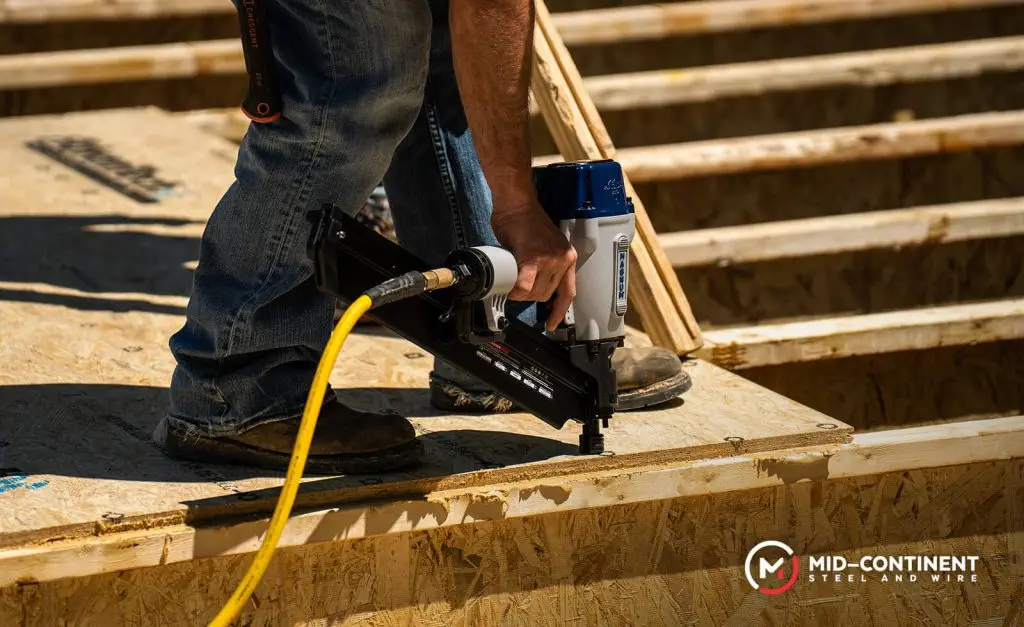
Conclusions
There are many types of framing nails used in the construction industry: interior walls and exterior walls both require proper nail size and nail length. Choosing the correct framing nail size can save on time and resources, preventing wood splitting and protecting structural integrity. Mid-Continent Steel and Wire carries a wide variety of nails and nail guns for your framing projects, no matter the requirements.